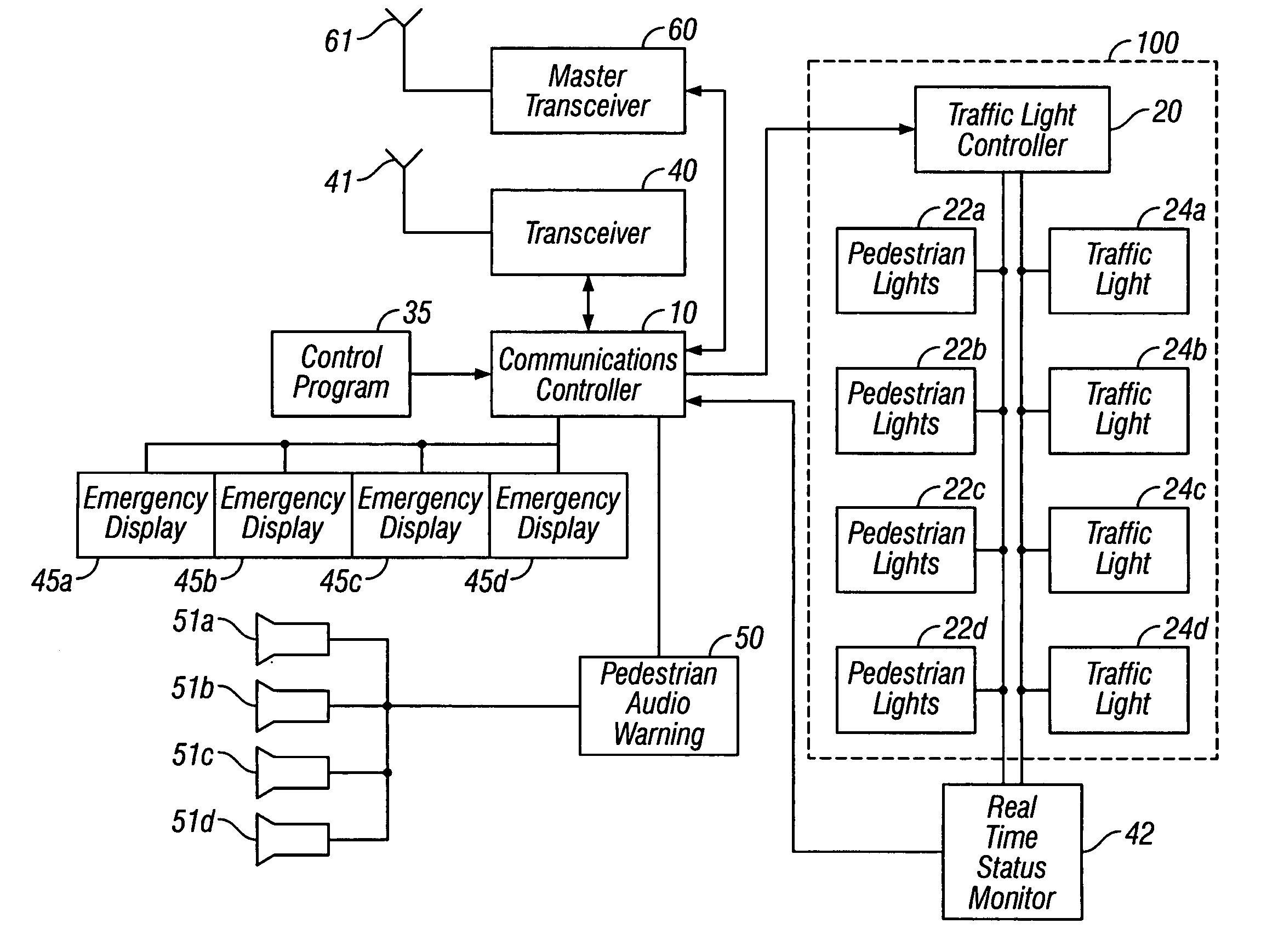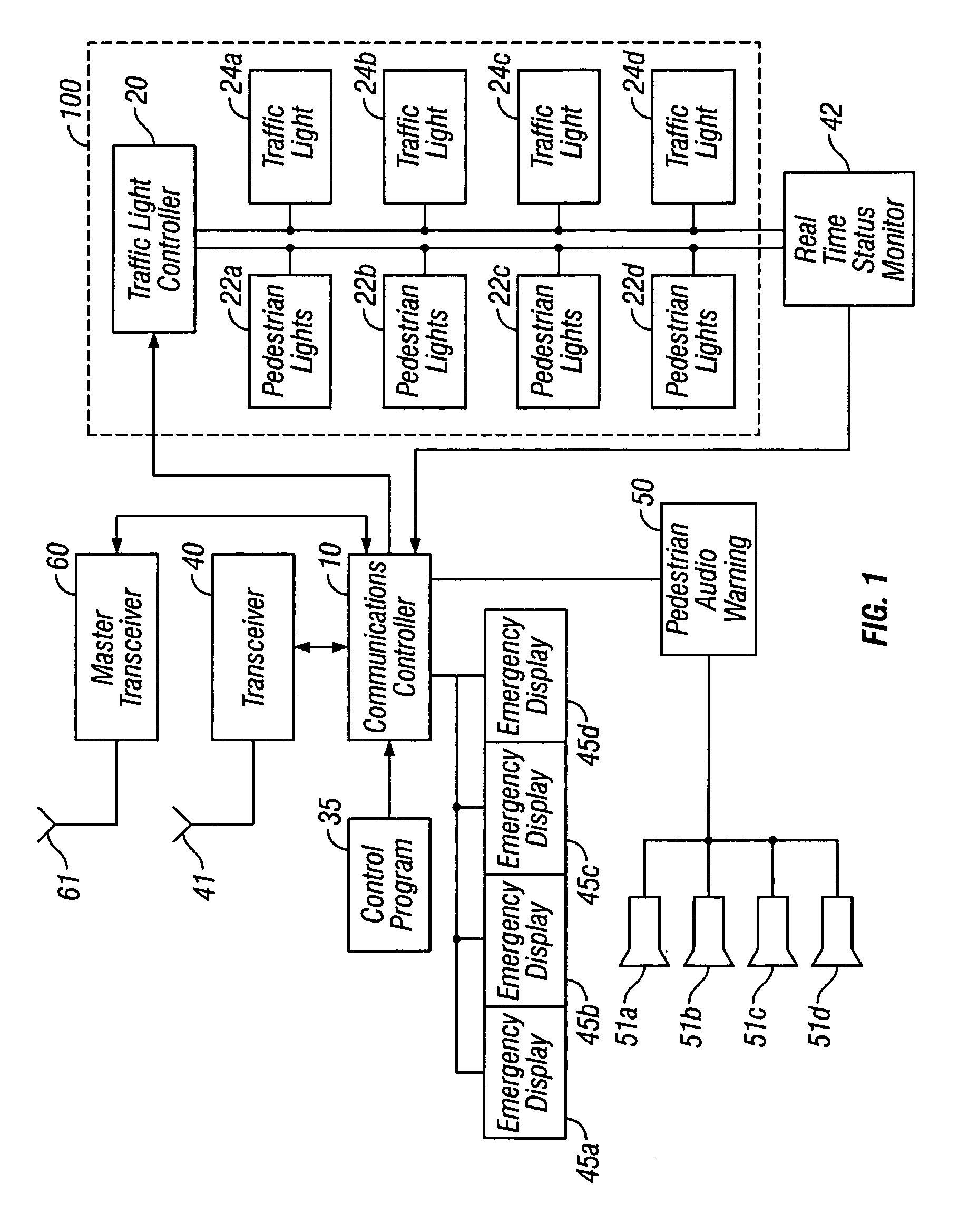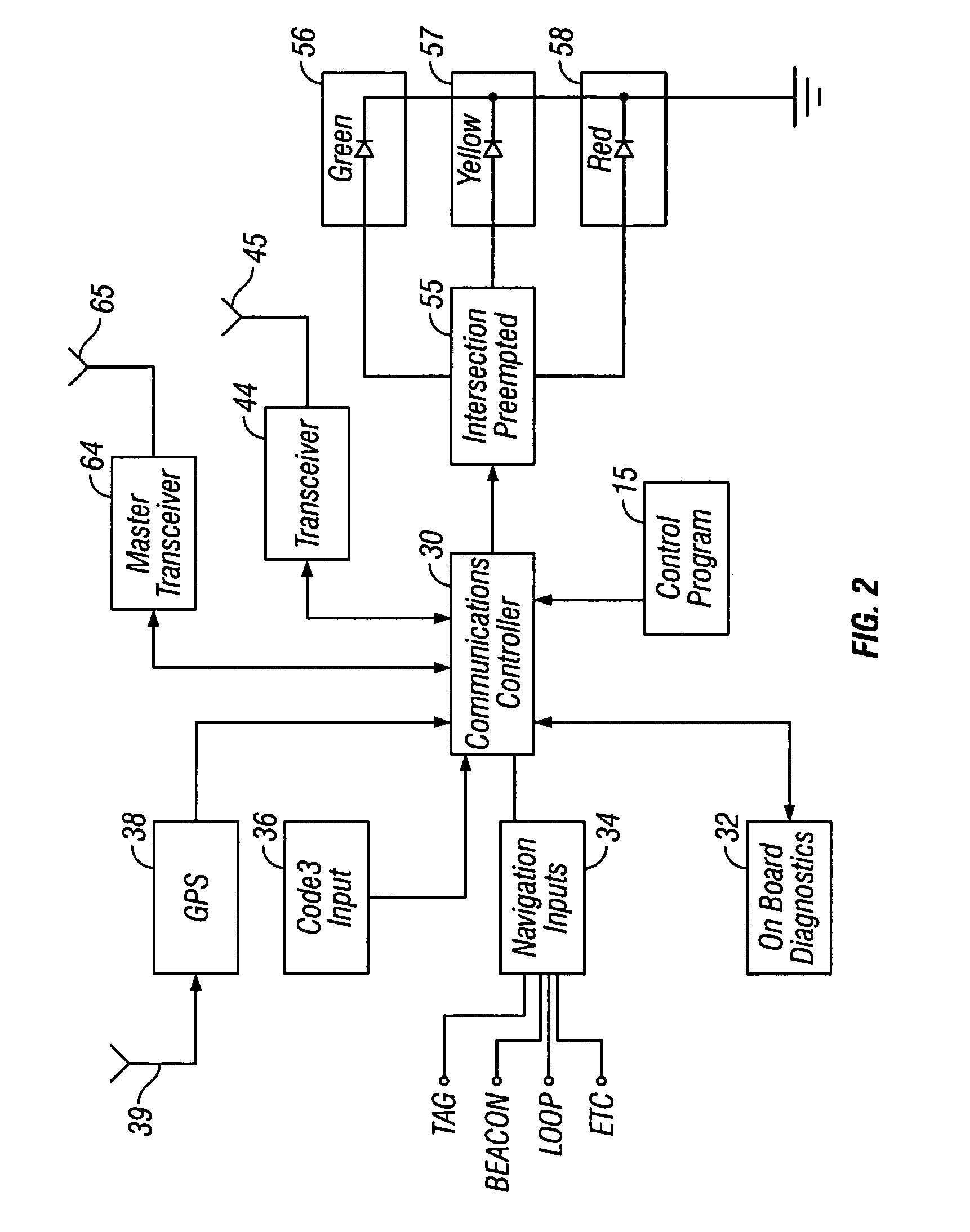Emergency vehicle traffic signal preemption system
a technology for emergency vehicles and traffic signals, applied in vehicle position/course/altitude control, process and machine control, instruments, etc., can solve the problems of not providing real-time monitoring of intersection phases, all of these known systems have severe operational limitations, and operators do not get the feedback desired
- Summary
- Abstract
- Description
- Claims
- Application Information
AI Technical Summary
Benefits of technology
Problems solved by technology
Method used
Image
Examples
Embodiment Construction
[0037]The details of the emergency vehicle traffic signal preemption system are illustrated in the block diagrams of FIGS. 1 and 2. FIG. 1 illustrates the functional details of the system at each intersection while FIG. 2 illustrates the functions of the system installed in an emergency vehicle.
[0038]Traffic light control system 100 at an intersection includes traffic light controller 20 that generates the appropriate sequence of on-time and off-time for the various traffic lights that controls vehicular and pedestrian traffic at an intersection. Traffic light controller 20 also has the capability to be forced by external signals into a mode that activates all “red” lights simultaneously to close the intersection allowing safe passage for emergency vehicles. Controller 20 is preferably a microprocessing circuit driving isolated lamp drivers but discrete designs are also feasible. Some intersections may be more complicated, controlling turn lanes with arrow lights, but the basic prin...
PUM
 Login to View More
Login to View More Abstract
Description
Claims
Application Information
 Login to View More
Login to View More - R&D
- Intellectual Property
- Life Sciences
- Materials
- Tech Scout
- Unparalleled Data Quality
- Higher Quality Content
- 60% Fewer Hallucinations
Browse by: Latest US Patents, China's latest patents, Technical Efficacy Thesaurus, Application Domain, Technology Topic, Popular Technical Reports.
© 2025 PatSnap. All rights reserved.Legal|Privacy policy|Modern Slavery Act Transparency Statement|Sitemap|About US| Contact US: help@patsnap.com



